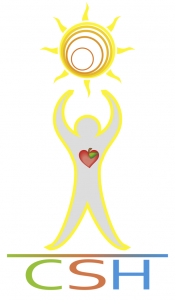Contributed by: Emily Meilleur & Aashna Pardhan (Teacher Candidates)
As new teacher candidates, we are always looking forward to new and exciting ways to incorporate health 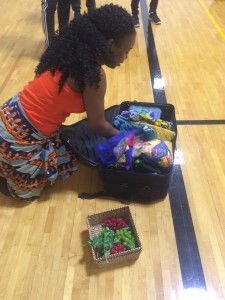 related activities into our physical education lessons, and this African Dance workshop was exactly what we were searching for! A few weeks ago our Comprehensive School Health Cohort (CSH) was lucky enough to have Kahmaria Pingue come in and show us her moves. Kahmaria is a teacher, but she is also an African dance instructor (for fitness) and an Afrocentric Storyteller using dance and culturally relevant crafts. She teaches this to students of all ages. She also instructs African dance to students in schools, not only teaching students about the benefit of dance for fitness but about the culture and history that is involved in African dance.
related activities into our physical education lessons, and this African Dance workshop was exactly what we were searching for! A few weeks ago our Comprehensive School Health Cohort (CSH) was lucky enough to have Kahmaria Pingue come in and show us her moves. Kahmaria is a teacher, but she is also an African dance instructor (for fitness) and an Afrocentric Storyteller using dance and culturally relevant crafts. She teaches this to students of all ages. She also instructs African dance to students in schools, not only teaching students about the benefit of dance for fitness but about the culture and history that is involved in African dance.
Kahmaria came to the University of Ottawa to show us some styles of African dance. Her workshop was very interactive and exciting. 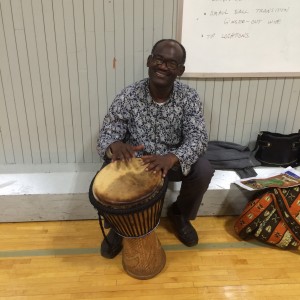 She had every member of our cohort up and on their feet, moving to the music despite their nerves or apprehension. Her dancing, music, and positive attitude was infectious and everyone was in the African dance groove! Accompanying Kahmaria was a drummer who had an Djembe (African goblet drum) he played in addition to her music and dance moves.
She had every member of our cohort up and on their feet, moving to the music despite their nerves or apprehension. Her dancing, music, and positive attitude was infectious and everyone was in the African dance groove! Accompanying Kahmaria was a drummer who had an Djembe (African goblet drum) he played in addition to her music and dance moves.
Kahmaria had brought several traditional African dance items with her to add to the cultural aspect of this experience. She had brought pieces of fabric to wrap into skirts called 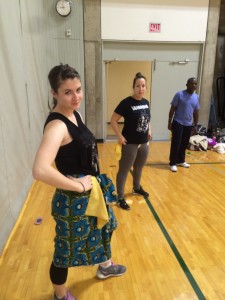 Kangas, as well as colourful cloths to use and bracelets with beads and bells to wear on our ankles while we danced. She taught styles of African dance from both the east and west of Africa and broke them down step by step. She was also very helpful in explaining ways we could break down the steps and teach these dance moves to our students. Her workshop was informative and enjoyable.
Kangas, as well as colourful cloths to use and bracelets with beads and bells to wear on our ankles while we danced. She taught styles of African dance from both the east and west of Africa and broke them down step by step. She was also very helpful in explaining ways we could break down the steps and teach these dance moves to our students. Her workshop was informative and enjoyable.
African dance does so much more than combine culture and creativity in an artistic way. It allows body movement to be expressed 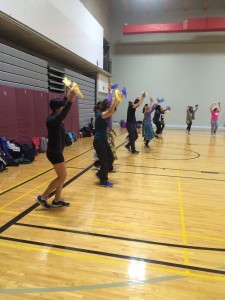 in a way that is new for many students. Understanding one’s physical environment is a key component of any classroom activity, but when it comes to health and physical education specifically, it becomes of even more importance for students to be physically literate on what movements their body is capable of. A program such as the one Kahmaria has introduced allows students to explore the idea of physical literacy in more depth.
in a way that is new for many students. Understanding one’s physical environment is a key component of any classroom activity, but when it comes to health and physical education specifically, it becomes of even more importance for students to be physically literate on what movements their body is capable of. A program such as the one Kahmaria has introduced allows students to explore the idea of physical literacy in more depth.
The Comprehensive School Health framework is essential in addressing school health. A workshop such as this one will link heavily to the pillar of teaching and learning, and also integrate the student engagement under the foundations of a healthy school. The students will be able to learn essential movement skills and be able to incorporate this into a healthy living exercise. This workshop would fit in perfectly when incorporating the dance portion of the arts curriculum into a physical education lesson focusing on physical literacy and its connection with the performing arts.
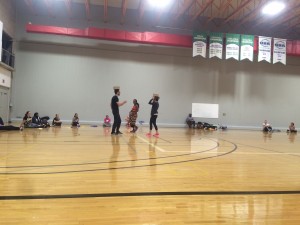 Not only does African dance embody the idea of employing healthy school programs, but it also explores a cultural aspect of education that can sometimes be a challenge to link to a physical education class. Implementing workshops as enriched as this one, allow for students who are familiar with the culture to feel a sense of pride and act as leaders amongst their peers, and those who are unfamiliar, to learn and partake in a culturally innovative experience.
Not only does African dance embody the idea of employing healthy school programs, but it also explores a cultural aspect of education that can sometimes be a challenge to link to a physical education class. Implementing workshops as enriched as this one, allow for students who are familiar with the culture to feel a sense of pride and act as leaders amongst their peers, and those who are unfamiliar, to learn and partake in a culturally innovative experience.
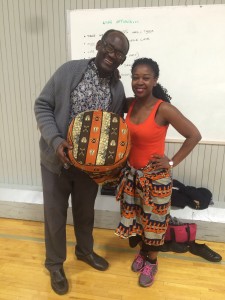 African dance uses a variety of movements and coordination that allow students to stay active and also have fun while being apart of it. This active form of physical activity allows for students to not only be engaged with their peers and instructors directions but also aware of their own physical autonomy. We would encourage all educators to take advantage of this terrific program, and implement it in an effort to continue building healthy school environments!
African dance uses a variety of movements and coordination that allow students to stay active and also have fun while being apart of it. This active form of physical activity allows for students to not only be engaged with their peers and instructors directions but also aware of their own physical autonomy. We would encourage all educators to take advantage of this terrific program, and implement it in an effort to continue building healthy school environments!
